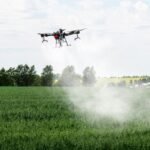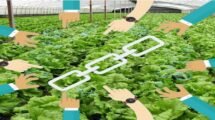Meghalaya’s Path to a $10-Billion Economy by 2028: Agriculture at the Core
Meghalaya is working towards becoming a $10-billion economy by 2028. At the heart of this plan is agriculture, which supports over 80% of the State’s population and is the main source of income in rural areas. To modernize and strengthen the sector, the Government of Meghalaya has launched several major initiatives aimed at supporting farmers, promoting sustainability, and driving economic growth.
Mission Mode Projects: A Game-Changer for Meghalaya’s Agriculture
The Mission Mode Projects are key to Meghalaya’s agricultural development. They focus on important crops like turmeric, ginger, honey, pineapple, jackfruit, and more. These projects aim to build a strong system for growing and selling high-value crops by providing farmers with inputs, training, and better infrastructure.
Transforming Turmeric and Ginger Farming
Launched in 2018, the Lakadong Mission has transformed turmeric farming in the state. The number of turmeric producers has grown 13 times. Today, around 13,000 women farmers across 124 villages are involved. Thanks to better processing and stronger value chains, their incomes have increased by 60%.
Similarly, the Ginger Mission has provided quality seeds to over 17,000 farmers. This has made Meghalaya a leader in ginger production and created many jobs.
These efforts are part of the State’s larger goal to double the contribution of agriculture to the economy by 2028. Also Read | Budget 2024: An attempt to entice farmers, or a dry spell?
Promoting Organic and Sustainable Farming
Meghalaya is also expanding organic farming to more than one lakh hectares to meet global demand for chemical-free, eco-friendly produce. The State aims to connect 50% of its farmers to high-value markets through collective marketing hubs and processing centers, which is already helping boost rural incomes.
Other initiatives like the Piggery Mission and Apiculture Mission 2.0 have increased productivity and created thousands of jobs, especially for women and youth. These programs show Meghalaya’s commitment to improving rural lives while protecting the environment.
Using Technology and Traditional Wisdom
Technology and innovation are playing a big role in this transformation. New processing units and marketing centers help farmers earn more. Climate-smart practices like agroforestry and watershed management show that Meghalaya is serious about sustainability. At the same time, the revival of traditional farming methods like jhum cultivation ensures that progress doesn’t harm the environment.
Partnering for Progress
To further boost agriculture, Meghalaya has partnered with global organizations like the World Bank, IFAD, and JICA. Projects like Megha-LAMP and the Community Led Landscape Management Project (CLLMP) have empowered farmers by forming Self-Help Groups (SHGs) and farmer-producer organizations. These externally aided projects (EAPs) have a multiplier effect—success in one project attracts more funding for others, showing Meghalaya’s ability to manage and scale such programs effectively.
The Road Ahead: Collaboration and Private Investment
As Meghalaya continues on this journey, agriculture will remain a key part of its economic future. While government and international support have been important, private investment is also needed to expand these efforts.
With ongoing support for farmers and strong partnerships, Meghalaya is on track to meet its $10-billion economy goal—and set an example for inclusive and sustainable development in India.
—Dr Lyngdoh, Minister for Agriculture and Farmers’ Welfare, Government of Meghalaya


















Add Comment